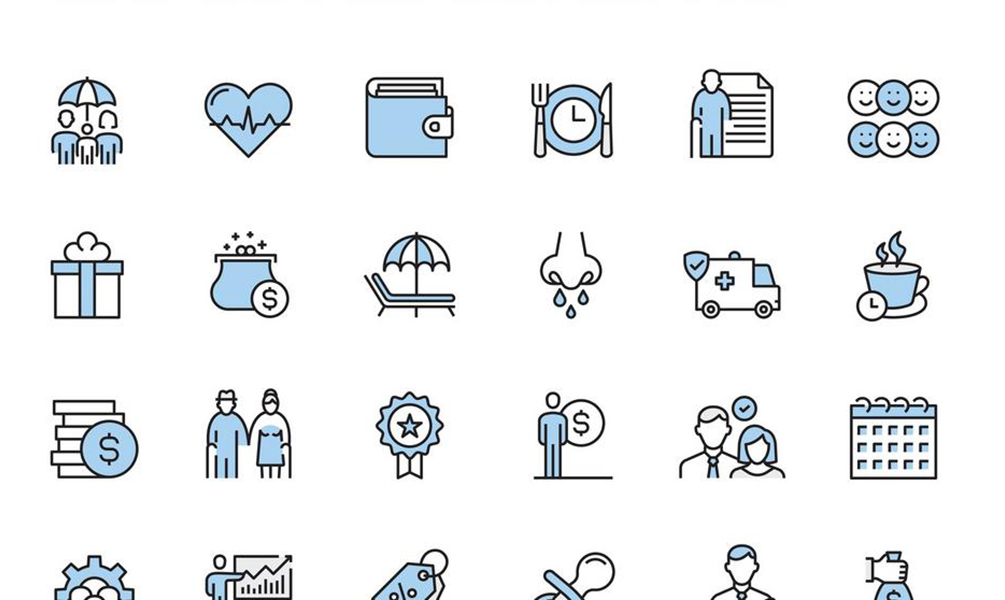
10 Voluntary Benefits Expected To Grow in 2023 (and Beyond)
Voluntary benefits, which allow your employees to choose certain types of coverage and then pay for some or all of the related costs, will continue to grow in 2023.
With as many as five generations in the workforce at once and an increasing preference for personalization, the demand for benefits that fit different needs has never been greater. The COVID-19 pandemic has also heightened awareness of the need for supplemental coverage to help employees and their dependents deal with financial, physical and mental health challenges.
The good news is that voluntary benefits are largely considered a win-win for employers and employees.
As the employer, you stand to gain by:
- Offering a wider range of benefit options at little or no extra cost to you
- Increasing the perceived value of your benefits by responding to employees’ needs
- Saving on payroll taxes when employees pay for coverage with pretax dollars
Employees also receive several advantages, including:
- Saving money through group rates instead of individual coverage
- Choosing from vetted companies rather than researching options on their own
- Gaining convenience and tax savings through pretax payroll deductions
- Potentially having the option to convert coverage to an individual policy once their employment has ended
Let’s look at 10 voluntary benefits — five mainstays and five newer options — expected to grow in 2023 and beyond.
Mainstays
The following five options are by no means new offerings, but they continue to increase in popularity because they offer vital protection to employees and loved ones facing illness, injury or death:
- Life insurance
- Accident insurance
- Critical illness insurance
- Hospital indemnity insurance
- Disability coverage
Life insurance — Voluntary life insurance is a top choice because it guards against one of life’s biggest risks. This option allows employees to select supplemental coverage based on their individual and family needs under more affordable group rates. In addition, coverage under a certain dollar amount often comes without a medical exam requirement. This allows employees with higher risk factors or preexisting conditions to obtain coverage that would otherwise by excluded or unaffordable.
Accident insurance — Employees can use accident insurance to help pay for certain costs that aren’t covered by their medical plan, including ambulance transportation, medical tests, intensive care treatment and rehabilitation.
Critical illness insurance — This type of policy covers specified major health events like cancer, heart attack and stroke. It pays a lump sum that employees can use to cover medical expenses, replace lost wages, and pay for child care and other expenses.
Hospital indemnity insurance — Three days in the hospital typically costs about $30,000, according to healthcare.gov. Hospital indemnity insurance provides an extra layer of protection by paying employees a lump sum to cover expenses related to hospital admissions and stays for specified injuries and illnesses. As with critical illness insurance, employees can use the funds at their discretion.
Disability coverage — Short-term disability (STD) and long-term disability (LTD) are perennially popular voluntary benefits because they allow employees to replace some of their income if they are unable to work due to sickness or injury. STD coverage usually provides benefits up to six months, while LTD provides benefits for years or even decades.
Newer options
These five options are in increasing demand as employees take a holistic approach to wellness and risk protection:
- Mental health support
- Financial planning services
- Identity theft insurance
- Legal services
- Pet insurance
Mental health support — Mental health awareness had been growing before the pandemic, but the spotlight is even brighter now. Mental health is expected to be a top trend in employee benefits in 2023. Voluntary benefits include treatment and prevention options like therapy sessions, telehealth counseling and subscriptions to mental health apps.
Financial planning services — Financial concerns are consistently reported as a top stressor. With economic uncertainty and high inflation, financial wellness is becoming an expected part of the employee experience. Voluntary financial benefits include meetings with financial advisers or coaches, online courses, budgeting workshops, student loan repayment programs, credit card debt counseling, estate planning and other money management services.
Identity theft insurance — From remote work to personal shopping, our lives are moving online — and scammers are taking advantage. Identity theft insurance can support employees who have suffered monetary or reputational damage due to identity theft. Benefits include monitoring of sensitive data, extra layers of account verification, breach alerts, and compensation for financial losses and court costs.
Legal services — This benefit can connect employees to lawyers with the expertise to prepare wills, trusts and other legal documents. Employees may also receive legal services for tax, traffic and civil violations. With attorney fees ranging from $100 to $300 an hour (or more), these benefits can add up quickly.
Pet insurance — Pet adoptions rose dramatically during the early part of the pandemic, and pet care shows no signs of slowing. Pet insurance can help cover a range of expenses, including injuries, illnesses, prescription diets and emergency boarding.
Finding the right benefits
Talk to your insurance broker or benefits adviser about voluntary benefit options. They can help you identify the best fits for your employee population and answer your questions on carriers, costs and plan administration.
This content is for informational purposes only and not for the purpose of providing professional, financial, medical or legal advice. You should contact your licensed professional to obtain advice with respect to any particular issue or problem.
Copyright © 2023 Applied Systems, Inc. All rights reserved.
